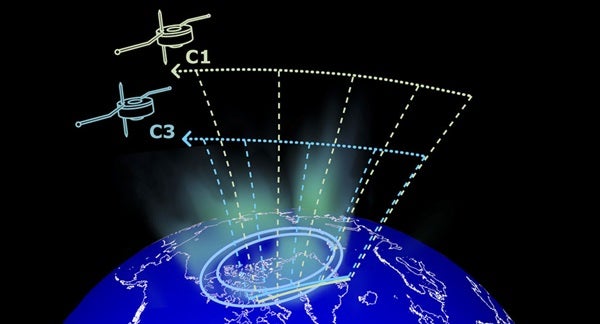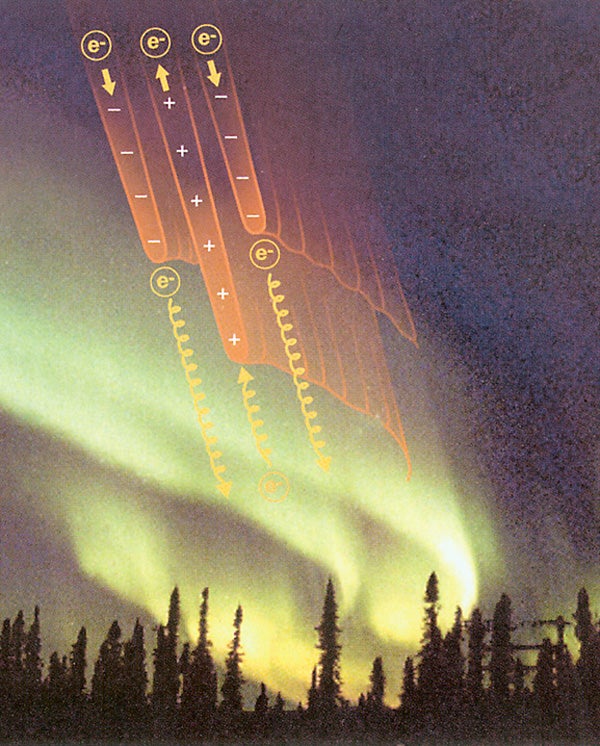Two of Cluster’s four satellites found themselves in a natural particle accelerator above the Northern Hemisphere June 5, 2009. The first to cross was satellite C3 at an altitude of 4,000 miles (6,400 kilometers), followed 5 minutes later by C1 at 5,600 miles (9,000 km).
This is the first time that scientists have measured such a region simultaneously using more than one satellite. The readings allow the electrical landscape of the acceleration region to be mapped.
“This is like geography, only instead of the contours being the height of a landscape, they are the electrical potentials that span the region,” said Goran Marklund from the Royal Institute of Technology, Stockholm, Sweden.
These electrical potentials act in both uphill and downhill directions, accelerating particles toward and away from Earth, according to their charges.
When particles strike the atmosphere, they create the shimmering curtains of light known as aurorae, or more commonly the northern and southern lights. About two-thirds of the bright aurorae are estimated to be produced this way.
The satellites do not encounter a natural particle accelerator on every orbit. Those responsible for the bright aurorae are temporary alignments of the electrical fields around Earth. They are highly variable in altitude, and so they are not always present.
This first encounter with a natural particle accelerator associated with a large-scale aurora has proved that they may be stable for at least 5 minutes. A few more encounters are expected in the near future before Cluster’s orbit drifts back out of the region.
“Cluster has now shown us the very heart of the acceleration process responsible for most bright auroras,” said Marklund. “It has given us our first look at the electrical structure and stability of such an accelerator.”
Such natural particle accelerators pop up ubiquitously throughout the solar system, especially in the strong magnetic fields of the gas giants Jupiter and Saturn.
The new results from Cluster allow theoreticians to place much tighter constraints on their models of exactly how such accelerators work and give greater insight into the workings of space plasma.











